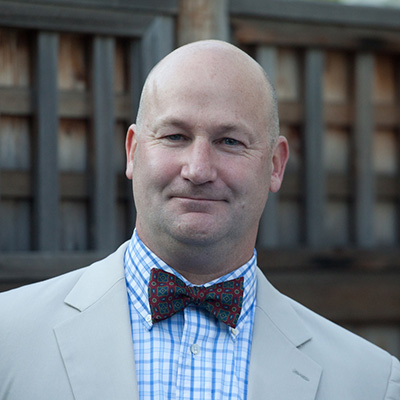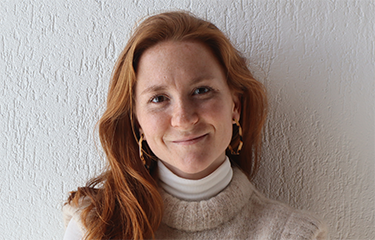Many fishers working in the global seafood industry face living income gaps, a plight sustainability advocates have been determined to irradicate. Susanna Balaguer Serra of the Impact Institute Sustainability Consultant Susanna Balaguer Serra is working to raise awareness about the reality of underearning in the seafood sector. She will be a featured speaker for the Seafood Expo Global conference session, “Supply chain equity: Value distribution in blue swimming crab and mahi-mahi,” taking place on 26 April from 10:45 to11:45 a.m.. In an interview with SeafoodSource, Balaguer Serra said closing the living income gap in seafood is a key issue the industry must take on.
SeafoodSource: What project are you currently working on in the seafood industry?
Balaguer Serra: We are working on understanding how value is distributed along the supply chain of selected fisheries and on capturing the living income gap faced by fishers. When the research is completed, we aim to share with a wide audience the findings from our assessments, which highlight the inequitable distribution of value and inherent underearning of fishers. Underearning is a measure of the difference between how much self-sufficient actors earn and the living income for a given area. By tackling multiple and diverse channels of communication in different forms, we aim to reach, inform, and inspire the target audience, which includes the seafood industry, the grantees of our client Walton Family Foundation, and the scientific community.
SeafoodSource: How did you get involved?
Balaguer Serra: We started our collaboration with the Walton Family Foundation in October 2021. They were interested in gaining a deeper understanding of the economic status of fishers with the goal of gaining sufficient actionable information for decision-making and strategy development required to support and preserve fishery communities. We assessed the blue swimming crab fishery in Indonesia and the mahi fishery in Peru. These are export-oriented artisanal fisheries, with approximately 80 percent of the final product being exported to the United States. In particular, we conducted both a value distribution assessment and a living income gap assessment based on profit-cost structures for different actors in the supply chain. The objective of these assessments is to capture the economic wellbeing of upstream actors in the chain. It provides key insights and answers to questions such as: How much value do fishers retain? How does this compare to the value retained by downstream partners, such as processors or retailers? What is the average living income gap?
At Impact Institute, we have more than 10 years of experience in conducting value distribution and living income gap assessments from a wide variety of crops across multiple geographies. We have a unique focus on the wellbeing of smallholder farmers, from both a social and an environmental point-of-view. Socially, we focus on measuring the impact of underearning and we assess other impacts such as employee health and safety, freedom of association, and child labor. Environmentally, we capture the impact that cultivation has on soil, air, water, and climate, amongst others. Not only do we measure this, but we also use the insights from our assessments to guide organizations in minimizing this impact and closing the living income gap.
SeafoodSource: What is the value of doing this type of assessment?
Balaguer Serra: By conducting this type of assessment, stakeholders in the industry can create actionable change. For instance, with a living income gap assessment one can tailor interventions on the field to tackle the drivers of living income. Is it a matter of cost? A matter of production? A matter of price? Data is key to integrate impact in decision-making. To do so, you need to dissect the data and understand what is required in each specific situation. Once you know what part of the equation you need to tackle, you can create bespoke interventions to minimize the negative impact and improve the wellbeing of farmers. Further, these assessments can be used to mobilize all actors in the system, from processors to consumers, including NGOs and public authorities. It all boils down to finding measures that enhance the position of the farmer [or] fisher in the value chain, by gaining knowledge about your key producers and their working conditions. For instance, from the assessment of the blue swimming crab, we found that their cost structures are relatively high. An example of a bottom-up intervention recommended to tackle the cost dimension is to create a community savings cooperative, where fishers can contribute to group savings and take out loans. This has proven to be a successful measure for accessing capital in other fisheries.
However, performing these assessments will not be voluntary anymore. Upcoming E.U. regulations require organizations to start assessing and monitoring working conditions and human rights violations in their value chain, for both direct workers of an organization and all workers in the chain. These upcoming E.U. regulations, namely the CSRD [Corporate Sustainability Reporting Directive] as well as the CSDD [Corporate Sustainability Due Diligence], are intended to go beyond transparency by disclosing sustainability information across several topics, from environmental and social impact to governance and internal control. Further, organizations need to demonstrate their progress in preventing and mitigating human rights breaches, which includes demonstrating the progress in closing living income gaps for fishers and farmers.
SeafoodSource: What are you learning about value distribution in mahi and blue swimming crab?
Balaguer Serra: Through our work with the Walton Family Foundation, we found out that more than 60 percent of blue swimming crab fishers and almost 40 percent of mahi fishers earn below a living income. This is alarming. Most alarming is the fact that these results are common across other food industries, such as the banana or the coffee industry. Redistribution of value is key to guarantee that actors at the beginning of the supply chain have a decent living. Less than 1 percent of shareholder payouts from a group of American and European supermarkets are required to close the living wage gap for all formal workers in Brazil’s largest coffee-producing state.
I believe that achieving living incomes should be a goal for all organizations working directly or indirectly with agricultural producers and fishers. Monitoring the progress to achieve this goal increases transparency and reduces both compliance and reputational risk. However, I would also like to point out that there is more to poverty than economic wellbeing. Other important dimensions that organizations should pay attention to include access to services, housing, voice in the community, health, education, living standards, access to information, inclusiveness, and violence, among others. It is important to further the frameworks and methodologies out there to capture the big picture of poverty faced by farmers and fishers across the globe to ensure the most relevant interventions are formulated to address the multiple dimensions of poverty. Value distribution is not only about profit-cost structures from different players in the value chain, but also about power imbalances, risk, and fairness.
Photo courtesy of Susanna Balaguer Serra







